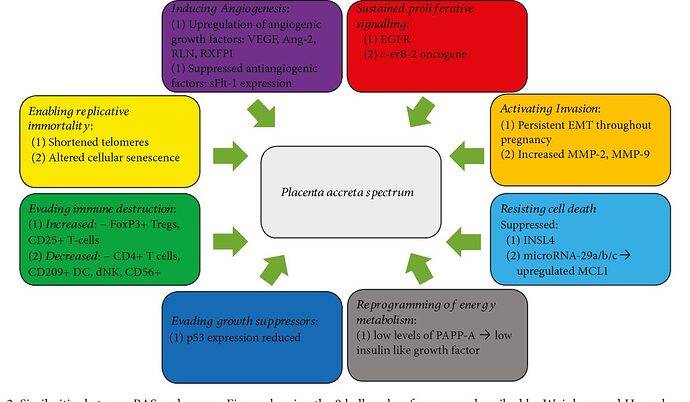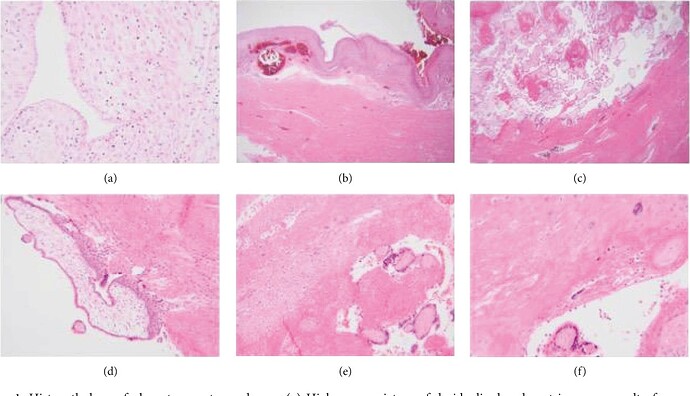Placenta Accreta Spectrum: A Review of Pathology, Molecular Biology, and Biomarkers
Helena C Bartels, James D. Postle, +1 author Donal J BrennanPublished in Disease markers 2018
DOI:10.1155/2018/1507674
Background. Placenta accreta spectrum (PAS) is a condition of abnormal placental invasion encompassing placenta accreta, increta, and percreta and is a major cause of severe maternal morbidity and mortality. The diagnosis of a PAS is made on the basis of histopathologic examination and characterised by an absence of decidua and chorionic villi are seen to directly adjacent to myometrial fibres. The underlying molecular biology of PAS is a complex process that requires further research; for ease, we have divided these processes into angiogenesis, proliferation, and inflammation/invasion. A number of diagnostic serum biomarkers have been investigated in PAS, including human chorionic gonadotropin (HCG), pregnancy-associated plasma protein-A (PAPP-A), and alpha-fetoprotein (AFP). They have shown variable reliability and variability of measurement depending on gestational age at sampling. At present, a sensitive serum biomarker for invasive placentation remains elusive. In summary, there are a limited number of studies that have contributed to our understanding of the molecular biology of PAS, and additional biomarkers are needed to aid diagnosis and disease stratification

